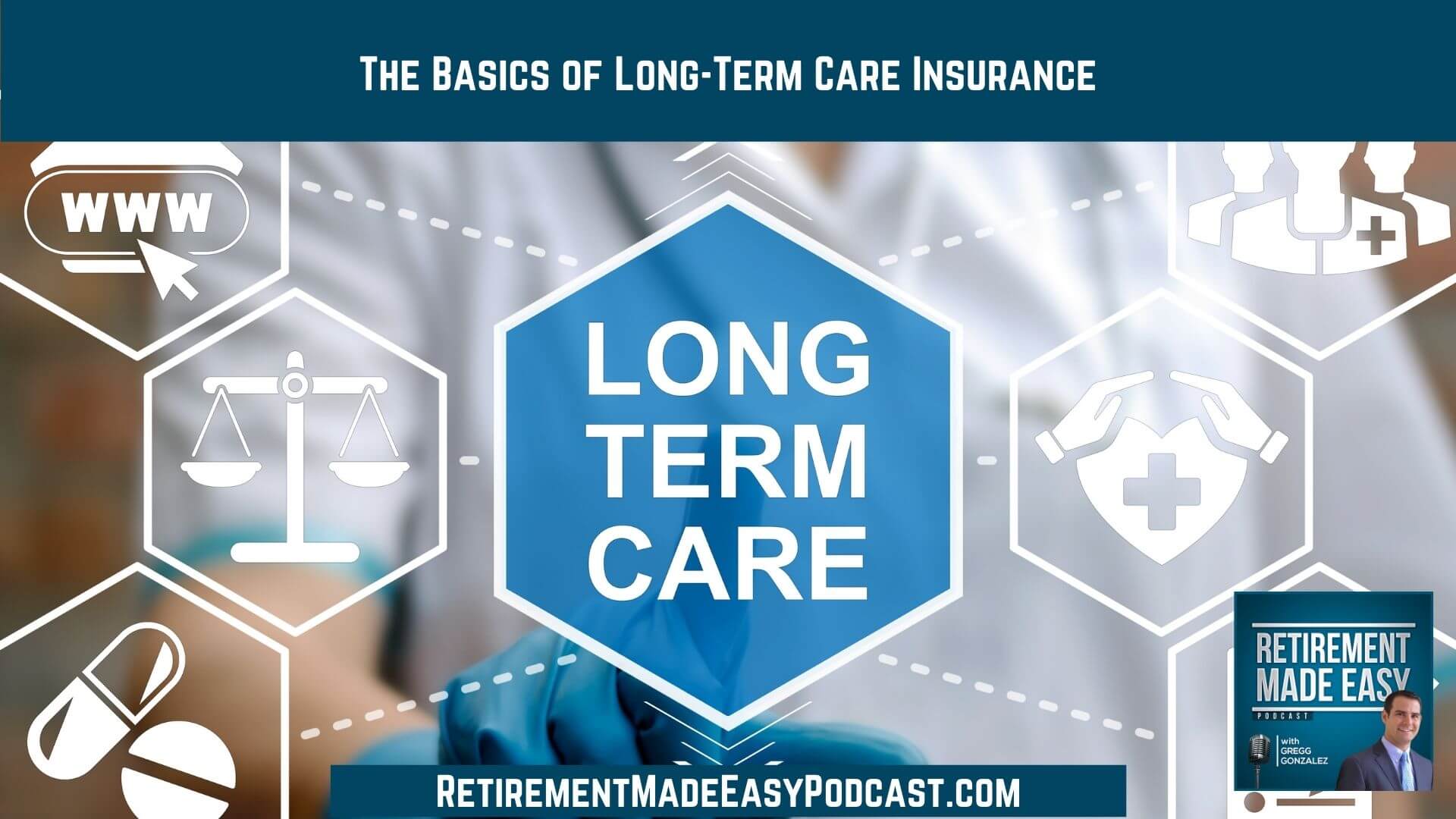
What is long-term care insurance? Who needs it? How many types are there? How does it work? In this episode of Retirement Made Easy, I want to give you the information you need so YOU can determine whether it’s a good fit for you now or in the future. If long-term care is something you’ve been worried about, don’t miss this episode!
You will want to hear this episode if you are interested in…
- [2:20] Is long-term care insurance necessary?
- [3:51] Option #1 for long-term care insurance
- [8:56] The 6 activities of daily living
- [10:37] The big mistake that many people make
- [12:53] Option #2 for long-term care insurance
- [14:45] A surprising fact about long-term care insurance
- [16:27] Some employers offer group long-term policies
Option #1 for long-term care insurance
The first type of long-term care insurance available—that you must medically qualify for—is similar to life insurance. You pay a monthly or annual premium and once you need care, you start receiving the benefits of the policy. But what if you never use the care you’ve paid for all these years?
Let’s say someone at age 60 buys the policy and it costs them $3,000 a year. They pay it for the next 20 years for a total of $60,000 total. If they die of natural causes without needing the care, the insurance company keeps the premiums and the policy is null and void. That’s a lot of wasted money.
If this person’s health went downhill and they needed care, they can put a claim on their policy. The average policy will pay up to $5,000 per month for nursing care or assisted living. The benefits are also tax-free.
The six activities of daily living
Most long-term care policies have requirements you must meet to start receiving benefits, usually based on being unable to complete at least two of the six activities of daily living. What are they? Bathing, dressing, eating, transferring, toileting, and continence.
My late grandfather had Parkinson’s disease. He was unable to dress and his balance was poor, so transferring was out of the question. He would qualify to receive benefits from this policy. Most policies will pay out on average 3–5 years. If you want to increase the benefits to seven years, it will increase your monthly or annual premium.
What is the big mistake that most people make when purchasing one of these policies? Listen to find out!
Option #2 for long-term care insurance
If you don’t want to pay a premium for 20 years—and get nothing out of it if you don’t use the care—another option exists. It’s a hybrid policy that combines long-term care and life insurance. Your premium will be higher BUT there will be a death benefit in most of these policies. So if you paid in $60,000, there may be a $60,000 death benefit that is given to your spouse or another beneficiary. The hybrid policy gives you some value if you don’t use the care.
Who pays more: men or women?
If you take a male and a female whose health is exactly the same and purchased the same policy for both—the premium is higher for women. Why? Because on average, women spend more money on long-term care than men do. According to the American Association for Long-Term Care, roughly ⅔ of the $6.6 billion paid out to long-term care policyholders was for the care of women. 75.7% of residents in assisted living communities are women. Women spend twice as much time needing care as men do.
What are other options for long-term care? When should you start looking for one of these policies? Listen to the whole episode to learn more!
Resources & People Mentioned
Connect With Gregg Gonzalez
- Email at: Gregg@RetireSTL.com
- Podcast: https://RetirementMadeEasyPodcast.com
- Website: https://StLouisFinancialAdvisor.com
- Follow Gregg on LinkedIn
- Follow Gregg on Facebook
- Follow Gregg on YouTube



